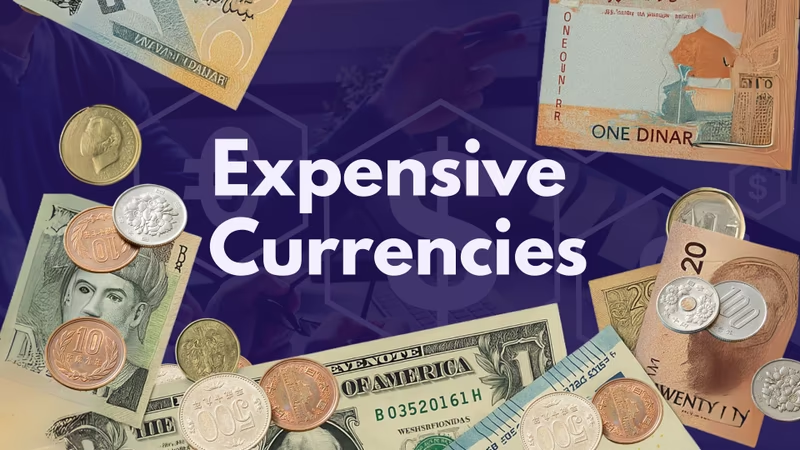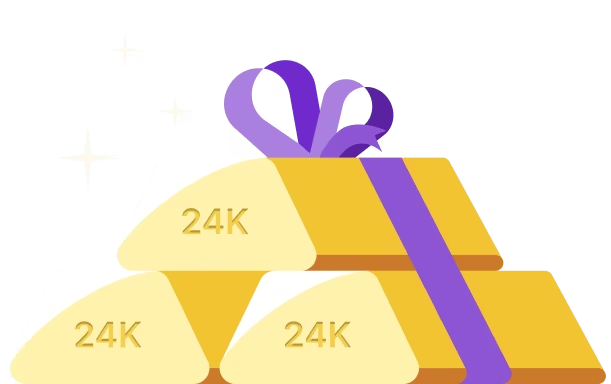What if the world's most valuable currency isn't the one you think?
It's not the dollar, the euro, or the pound. It's a small nation's currency backed by a sea of black gold. For many in India, the most practical measure of a currency's power is how it stacks up against the Indian Rupee (INR).
The pursuit of the world's most valuable money reveals a complex story about economic policy, natural resources, and global trust.
The answer to what makes a currency valuable is far more nuanced than a simple exchange rate, and understanding these factors is key to navigating the global economy.
Defining the “Expensive Currency”
When financial experts refer to the most expensive currency in the world, they are typically measuring its exchange rate against a globally recognized benchmark, most often the United States Dollar (USD) or the British Pound Sterling.
A currency is considered "expensive" or "strong" if a single unit of that currency can be exchanged for a large amount of a foreign currency. This metric, however, can be deceptive.
A high exchange rate does not necessarily mean a currency is the most powerful, most widely used, or most economically significant in the world.
As the analysis will show, the true power of a currency lies in its global influence, a distinction that separates the list of the most valuable currencies from the list of the world's most dominant financial instruments.
How Currency Value Shapes Economies
The value of a currency is a fundamental determinant of prices in international trade and has a significant impact on a country's economic health.
A sound monetary strategy that aims to keep the value of a nation's currency strong and stable is considered the best condition for long-term trade arrangements and sustained economic growth.
Impact on International Trade
A currency that appreciates, that is, increases in value over time, is a powerful economic force that presents a dual dynamic on a nation's trade balance.
Impact on Imports (The Consumer's Gain)
When a domestic currency strengthens, imported goods and raw materials become relatively cheaper. This is because fewer units of the domestic currency are needed to pay the same price in other currencies.
For consumers, this translates to increased purchasing power for foreign-made products.
For example, a stronger US dollar in 2022 resulted in a significant decrease in the price of imported goods, with imported petroleum falling by 37.3% from June to December of that year and imported building materials decreasing by 21.4% from March to December.
Impact on Exports (The Producer's Pain)
Conversely, a strong currency makes a country's exports more expensive for foreign buyers. This can negatively affect the competitiveness of domestic industries in the global marketplace.
When the US dollar strengthened in 2022, US exports became effectively more costly for foreign buyers.
This dynamic was reflected in the price indexes for key U.S. exports like soybeans and plastics, which saw declines as foreign demand became more sensitive to the higher cost.
Now that you know about the world's most valuable currencies, would you like to explore which Indian cities are home to such wealth?
The Role of Capital and Investment
Beyond trade, a currency's value plays a crucial role in attracting capital. A strong, stable currency gives foreign investors confidence that their money will not be eroded by inflation or unpredictable fluctuations.
This stability encourages long-term foreign investment and can lead to a country running a capital account surplus, where foreigners invest more in the country's assets than its own citizens invest abroad.
A tremendous amount of energy is invested in studying central banks and their policies because their actions directly impact a currency's purchasing power.
Policies that restrict money supply and induce savings, such as raising interest rates, can increase a currency's value and make it more attractive to global investors.
The World's Most Valuable Currencies
A visual comparison of the world's most expensive currencies compared to Indian Rupee (INR).
Top 10 Most Expensive Currencies vs. INR
This bar chart ranks the world's highest-valued currencies based on their exchange rate with a single Indian Rupee.
The following ranking identifies the world's costliest currencies based on their exchange rate per unit against the US dollar.
It is important to note that this list reflects a currency's raw value, not its global influence or trade volume, which are often different metrics of a currency's strength.
1. The Kuwaiti Dinar (KWD)
The undisputed leader, the Kuwaiti Dinar, is recognised as the world's most powerful currency by exchange rate. Introduced in 1961, the KWD's extraordinary value is a direct reflection of Kuwait's vast oil reserves and stable economic foundation.
The country's extensive oil production and export, combined with the Central Bank of Kuwait's tight control over the currency's supply, create a scarcity that bolsters its value.
The popularity of the Kuwaiti Dinar among Indian viewers is especially high, as the INR to KWD exchange rate is one of the most popular currency pairs, reflecting the significant Indian expatriate community living in Kuwait.
2. The Bahraini Dinar (BHD)
The Bahraini Dinar ranks as the second-highest currency globally. Like its neighbour, Bahrain is a major exporter of oil and gas, which are some of the world's most valuable commodities.
Its value is further anchored by a strategic fixed exchange rate, as the BHD is pegged directly to the US dollar.
The Bahraini Dinar's popularity is particularly relevant to Indian readers, as Indians make up the largest expatriate community in Bahrain. As a result, the INR to BHD rate is one of the most frequently used exchange rates.
3. The Omani Rial (OMR)
The Omani Rial holds its place as the third most valuable currency. Oman's economy is heavily reliant on its oil and gas reserves, and its government has maintained a relatively low inflation rate.
The Omani Rial's value is also supported by its peg to the US dollar, which provides stability and predictability in global financial markets.
A historical note of particular interest to Indian readers is that before 1940, the Indian Rupee (INR) was the official currency of Oman. Today, the INR to OMR exchange rate remains one of the most popular currency pairs, a testament to the close ties between the two nations.
4. The Jordanian Dinar (JOD)
With a value of approximately 1 JOD = 1.41 USD, the Jordanian Dinar is a unique case among the top-ranked currencies.
Its high valuation is maintained by a fixed exchange rate to the US dollar, a policy that provides economic stability despite the country not being a major oil exporter.
This demonstrates that a commitment to sound monetary policy can be just as powerful as natural resource wealth in supporting a currency's value.
5. The British Pound Sterling (GBP)
Known simply as the pound sterling, the GBP is the world's oldest and fourth-most-traded currency.
Its value is upheld by a strong and globally recognised economy, with the Bank of England acting as its central bank.
The GBP's role as a reliable asset and its global demand contribute to its strength.
6. The Gibraltar Pound (GIP)
The GIP is pegged to the British Pound at a 1:1 ratio. Its high value is tied to its strong relationship with the UK economy and its status as a British territory.
7. The Swiss Franc (CHF)
The Swiss Franc's strength is founded on its global reputation as a "safe haven" currency. Switzerland's robust banking sector, strict financial policies, and political stability make the CHF a destination for investors during times of global economic downturn.
8. The Cayman Islands Dollar (KYD)
The KYD's value is fixed at 1.20 USD. The primary driver for its strength is not commodities but its robust banking and investment sector.
The absence of direct taxation in the Cayman Islands attracts financial industries from around the world, making the KYD one of the most stable and expensive currencies.
9. The Euro (EUR)
The Euro is the official currency for 20 of the European Union's member states and holds the distinction of being the world's second-most-traded and second-largest reserve currency, after the US Dollar. The collective economic strength of the Eurozone backs its value.
10. The United States Dollar (USD)
While the USD ranks lower on a pure exchange rate basis, it holds a unique and powerful position as the world's primary reserve and trading currency.
Its role as the preferred currency for international transactions and its status as a reliable asset during global instability solidify its influence far beyond its numerical value on this list.
Curious about which nations hold the most wealth? Check out the richest countries in the world here!
The Paradox of Power vs. Price
While the Kuwaiti Dinar may be the most expensive currency in the world, its global influence is dwarfed by others.
The true titans of global finance, the currencies that facilitate the overwhelming majority of international trade and investment, are the US dollar and the euro.
The US dollar, in particular, is the global "reserve currency," meaning it is the primary currency used by countries to hold reserves, price commodities, and conduct international transactions. The euro is the world's second-most traded and second-largest reserve currency.
The Titans of Trade: USD and EUR
The US dollar's dominance means that even countries like China, which are major importers of oil, must hold vast amounts of US dollars to facilitate these purchases.
The dollar’s primary role in international trade creates a unique system of exchange that influences everything from trade balances to capital flows.
The Dollar's Unique Leverage
The US dollar's status as a global reserve currency grants it unique leverage in the international financial system.
A clear example of this is the relationship between US monetary policy and global trade. When the US Federal Reserve raises interest rates, it makes the dollar more attractive to global investors, which subsequently increases its value relative to other currencies.
This appreciation of the dollar makes imported goods cheaper for American consumers but can make US exports more expensive for foreign buyers, potentially harming US export competitiveness.
This chain of events is further complicated by the fact that global commodities, particularly oil, are often priced in US dollars.
Consequently, a stronger dollar can make oil more expensive for importers using a different currency, which could potentially decrease demand and affect global energy markets.
This intricate web of interconnections reveals that the most valuable currencies in the world are not always the ones with the highest exchange rate but are often the ones whose value is deeply intertwined with the global financial system itself.
A currency is more than just a piece of paper or a digital number; it is a barometer of a nation's economic health and a key determinant of its position in the global economy.
Understanding the factors that make certain currencies the most costly is essential for anyone seeking to comprehend the flow of money, goods, and power across international borders.
Beyond understanding currency power, the savvy investor always looks for secure ways to grow wealth.
Want to secure your future by saving in digital gold? Learn more and start with Jar!










